- 0086-512-58361938
- michael@victory-chem.com
Flame retardants are also known as flame retardants, fire retardants or flame retardants: functional additives that impart flammable polymers with flame retardancy; and are classified into additive flame retardants and reactive flame retardants depending on the application method. According to the composition, the additive flame retardants mainly include inorganic flame retardants, halogen flame retardants (organic chlorides and organic bromides), phosphorus flame retardants (red phosphorus, phosphoric acid esters, and halogenated phosphoric acid esters, etc.) and nitrogen Flame retardants and carbonate flame retardants. Reactive flame retardants are mostly reactive halogenated organic and organic phosphorus monomers. In addition, molybdenum compounds, tin compounds, and iron compounds that have a smoke suppression effect are also in the category of flame retardants. It is mainly applicable to plastics with flame retardant requirements, delaying or preventing the burning of plastics, especially polymer plastics. Make it ignite for a long time, ignite self-extinguishing, difficult to ignite.
With the continuous development of the development and application of composite materials industry in China, flame retardants have broad market prospects in chemical building materials, electronic appliances, transportation, aerospace, daily-use furniture, interior decoration, clothing, food, housing, and other fields. In addition, fields such as coal fields, oil fields, and forest fire fighting have also promoted the rapid development of fire-retardant and fire extinguishing agents in China. China’s flame retardant has developed into the second largest additive for polymer materials, second only to plasticizers. The current production capacity is about 200,000 t/a, and the annual production volume is between 150,000 and 170,000 tons. The annual consumption 200,000 tons or so. The major part is imported from the United States and Israel. The main varieties imported are organic bromine and halogen-phosphorus flame retardants. There are more than 60 fire retardant production plants in China, capable of producing more than 50 kinds of products, mainly bromine-phosphorus series, of which brominated flame retardants are the most important series, accounting for about 30% of China’s organic flame retardants.
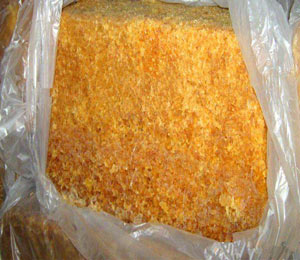
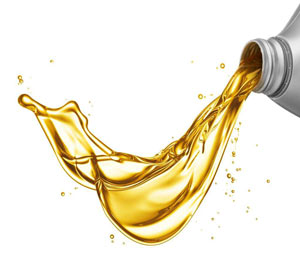
The types and consumption of domestic fire retardants are still dominated by organic flame retardants, and the production and consumption of inorganic flame retardants are still relatively small, but in recent years, the development momentum is good and the market has great potential. Although the most commonly used halogen flame retardants in flame retardants have unparalleled high efficiency in other flame retardant series, its harm to the environment and people cannot be ignored. The environmental protection issue is the focus of the development of auxiliary agents and applications. Therefore, the product structure of flame retardants has been adjusted at home and abroad, and the development of highly efficient and environmentally friendly flame retardants has been increased.
1. Status of application and production of environmentally friendly flame retardants
With the increasing awareness of environmental protection, safety, and health of people, countries around the world have begun to regard environmental-friendly flame retardants as the focus of research and development and application, and have achieved certain results. Flame retardants are classified according to effective elements and can be divided into phosphorus, chlorine, bromine and lanthanum based, aluminum based, boron based flame retardants. According to the flame-retardant effective elements, the flame retardants are divided into four types: halogen-free flame retardants, brominated flame retardants, halogen-phosphorus synergistic flame retardants and other flame retardants. Several of them are introduced and they have application prospects. Flame retardant.
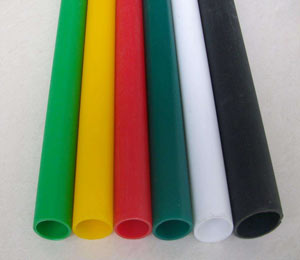
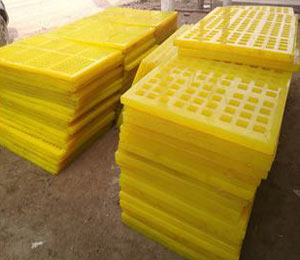
1.1 Halogen-free flame retardants
Halogen-free, low-smoke and low-toxic environmentally-friendly flame retardants have always been the goal pursued by people. In recent years, some flame retardant suppliers and applications in the world have shown high enthusiasm for flame-retardant and halogen-free flame retardant and halogen-free flame retardants. The development of flame-retardant materials has also invested a lot of energy. According to analysis, the main varieties of halogen-free flame retardants are phosphorus flame retardants and inorganic hydrates. The former mainly include red phosphorus flame retardants, inorganic phosphorus ammonium polyphosphate (app), ammonium dihydrogen phosphate, diammonium hydrogen phosphate, phosphate esters, organophosphorus non-halogen phosphate esters, and the like. The latter mainly includes magnesium hydroxide, aluminum hydroxide, modified materials such as hydrotalcite and the like. Ammonium polyphosphate and hydrotalcite are the representatives of this series of environmental protection products with good market prospects. The following two products will be analyzed.
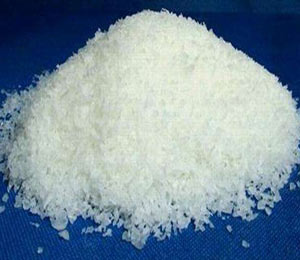
1.1.1 Ammonium Polyphosphate
Ammonium polyphosphate (abbreviated as app) is a long-chain inorganic polymer containing phosphorus and nitrogen. Its molecular formula is (nh4p03)n. Due to its advantages of good chemical stability, low hygroscopicity, excellent dispersibility, small specific gravity, and low toxicity, it has been widely used as a flame retardant treatment agent for plastics, rubbers, and fibers in recent years; it can also be used to prepare expansive fire retardant coatings. It is also used in the fire prevention treatment of ships, trains, cables and high-rise buildings. It is also used to produce dry powder fire extinguishing agents for use in coal fields, oil wells, and forests to extinguish large areas; in addition, it can also be used as fertilizer. The degree of polymerization of ammonium polyphosphate is the key to determine its quality as a flame retardant product. The higher the degree of polymerization, the better the flame retardant and fireproof effect. In China, there are already products with a degree of polymerization exceeding 100, and the degree of polymerization of foreign apps (ammonium polyphosphate) is already more than 500. The development of ammonium polyphosphate in China began in 1978. After more than 20 years of development, China’s ammonium polyphosphate production has a certain basis, basically adapted to the needs of the domestic market. In 2005, the output of ammonium polyphosphate in China exceeded 20,000 tons. In addition to satisfying domestic demand, there was still a small amount of exports. China’s ammonium polyphosphate production capacity is mainly concentrated in the southwest, east China and south central regions, with the largest output in the southwest region, followed by the east and south central regions. There are few ammonium polyphosphate productions in northeastern China and northwest China. The domestic ammonium polyphosphate production plant is relatively small. The largest production plants are Guizhou Zunyi Xinyuan Phosphorization Co., Ltd. and Shifang Changfeng Chemical Co., Ltd., with an installation scale of 3000t/a and the Rongtai plant has reached 3000t/a. . Followed by Shanghai Xinhua Flame Retardant Plant, the production scale is 2000t/a. The general installation scale is 400-1000t/a, and the minimum production scale is only 300t/a. As the ammonium polyphosphate consumer market continues to expand, its output will continue to increase.
1.1.2 Hydrotalcite
In the application of inorganic flame retardants, anionic layered functional materials have developed rapidly as flame retardants. It is a kind of inorganic compound with special structure. M2+ is a divalent ion, which is generally magnesium, m3+ is a trivalent metal ion, and an- is an anion. This material is abbreviated as hydrotalcite (ldhs). Due to the unique layered structure of the hydrotalcite and the composition of the lamina and the adjustable denaturation of interlayer anions, it has been widely used as an inorganic functional material in the fields of catalysis, ion exchange, adsorption, medicine, and the like. As a halogen-free high-smoke flame retardant, hydrotalcite can be widely used in plastics, rubber, coatings and other fields. The development of magnesia anion layered functional materials in China started in the late 1990s. Although the development history is short, it has developed rapidly. From the current status of China’s magnesium resources and the urgent demand and huge potential of the new flame retardant market, it is not difficult to judge that the time for the rapid development of China’s magnesium anion layered functional materials has matured. In the next five years, China’s magnesium anion layered functional materials will enter the peak of development as a substitute for brominated flame retardants.
1.2 Australian fire retardant
The production and use of brominated flame retardants has been more than 30 years old. There are currently more than 70 brominated flame retardants produced, the most important of which are decabromodiphenyl ether (dbdpo) and tetrabromobisphenol a ( Tbbpa) and hexabromocyclododecane (hbcd). The former two accounts for about 50% of the brominated flame retardants. Some traditional brominated flame retardants have been pressured by increasingly strict environmental protection requirements, forcing users to look for alternatives to bromine flame retardants, and at the same time promoting the introduction of new flame retardant systems. The shrinkage of traditional brominated flame retardants, such as PBDE, has provided market space for environmentally friendly brominated flame retardants such as brominated epoxy resins and decabromodiphenylethane.
1.2.1 Decabromodiphenylethane
Decabromodiphenyl ethane (dbpe) was first developed by Albermale, USA. Its relative molecular mass, thermal stability, and bromine content are comparable to those of dbdpo, but it is not a flame retardant for PBDE systems. It is not included in the combustion process. The production of polybrominated benzene parabens (pbdd) and polybrominated dibenzofurans (pbdf) is also compliant with German regulations relating to dioxin and the US EPA. Furthermore, decabromodiphenylethane is superior to decabromodiphenyl ether in its heat resistance, light resistance, and non-dialysis properties. Its flame-retardant plastic can be recycled, which is a feature that many brominated flame retardants do not have. At present, the product has been applied in a variety of engineering plastics, such as abs, pbt, pa and hips, with good results.
1.2.2 Brominated Epoxy Resin
The brominated epoxy resin is widely used due to its excellent melt flow rate, high flame-retardant efficiency, excellent thermal stability, and light stability, but also enables flame-retarded materials to have good physical and mechanical properties without blooming. Applied to the flame retardant treatment of engineering plastics such as pbt, pet, abs, and nylon-66, thermoplastics, and pc/abs plastic alloys. Brominated epoxy resins are classified into low, medium and high grades according to their molecular weight, and can be divided into ep type and ec type according to their end groups. They can be applied to different plastic materials.
In recent years, the development of brominated epoxy resins in China has been rapid, and in particular it has changed the shortcomings of low bromine content, low molecular weight, and can only be used as insulating and potting materials. At present, China’s brominated epoxy resin technology can produce matching products based on the relative molecular mass of flame-retardant polymer, in order to achieve the best flame-retardant effect and excellent flame-retardant performance. Among the brominated flame retardants, brominated epoxy resins have become increasingly popular as a new type of flame retardant in the domestic and foreign markets.
1.2.3 Brominated polystyrene
Brominated polystyrene (abbreviated as bps) is a brominated organic flame retardant. It has good mechanical, physical and chemical properties such as high flame retardancy, thermal stability and light stability. It is widely used in polybutylene terephthalate. Glycol esters, polyethylene terephthalate, polyphenylene oxide, nylon-66 and other engineering plastics. With the rapid development of the domestic engineering plastics industry, the demand for brominated polystyrene will be greatly increased, and the market prospect is broad.
1.3 Halogen-phosphorus flame retardants
Flame retardants of this type are characterized by the simultaneous presence of both bromine and phosphorus or bromine, phosphorus and nitrogen atoms in the molecule. In terms of flame-retardant properties, they synergistically work together; the bromine content in the molecule is low, the combustion process is accompanied by less smoke, harmful gas volatiles are less, and a certain degree of bromine content can improve the general phosphate esters. Flame retardants have the disadvantages of high volatility, poor resistance to migration, and poor resistance to thermal aging. The main product varieties include dibromooctanediol (dbnpg), dibromooctanediol phosphate, and dibromooctylene glycol phosphate cyanamide salts. Halogen-phosphorus flame retardants complement each other by using different mechanisms of action, resulting in synergistic results.